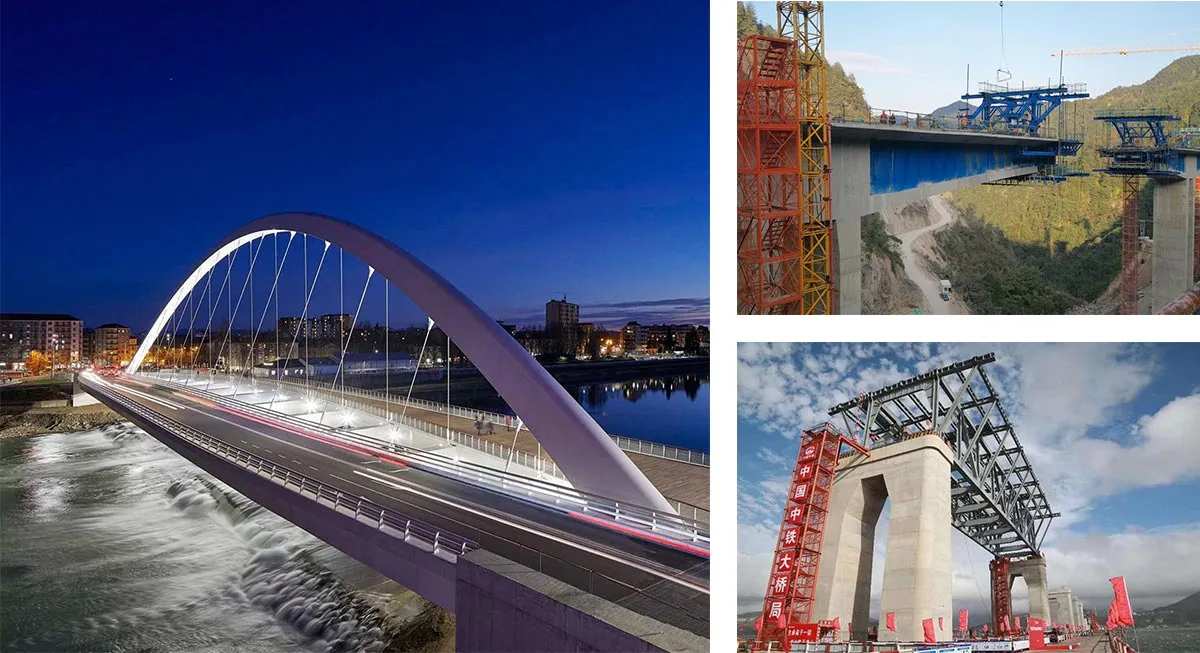Pre-stressed concrete (PC) strands play a crucial role in the construction of bridges due to their unique properties that enhance the structural integrity and load-bearing capacity of these critical infrastructures. PC strands are high-strength steel cables commonly used in pre-stressed concrete elements, and their application in bridges is driven by several key factors:
Strength and Durability: PC strands are typically made from high-strength, low-relaxation steel. This composition ensures that the strands can withstand heavy loads and resist fatigue, contributing to the long-term durability of the bridge structure. The high tensile strength of PC strands allows for the creation of pre-stressed concrete elements that can handle significant loads without deformation.
Pre-stressing for Increased Load Capacity: The primary purpose of using PC strands in bridges is to introduce pre-stressing into the concrete elements. Pre-stressing involves applying forces to the concrete before it experiences the load from its intended use. This process places the concrete in compression, counteracting the tensile forces it will face during its service life. By introducing pre-stress, the effective load-carrying capacity of the concrete is increased, allowing for the construction of longer spans and more robust bridge structures.

Flexibility in Design: PC strands for bridges provide engineers with greater flexibility in bridge design. The ability to pre-stress concrete elements allows for the construction of longer spans between bridge supports, reducing the need for additional supports and piers. This not only enhances the aesthetic appeal of the bridge but also allows for the construction of bridges over obstacles such as rivers or highways with minimal disruption to the surroundings.
Reduced Maintenance: Pre-stressed concrete bridges, reinforced with PC strands, typically require less maintenance over their lifespan. The pre-stressing helps to minimize the effects of creep and shrinkage in the concrete, reducing the likelihood of cracks and other structural issues. This characteristic is particularly beneficial for bridges, as maintenance activities on such critical transportation infrastructure can be logistically challenging and disruptive.
Resistance to Dynamic Loads: Bridges are subject to dynamic loads, including the weight of moving vehicles, wind forces, and seismic activity. The use of PC strands enhances a bridge's ability to withstand these dynamic loads by distributing and dissipating forces effectively. This is crucial for ensuring the safety and stability of the bridge, especially in areas prone to seismic activity or heavy vehicular traffic.
Construction Efficiency: The use of pre-stressed concrete elements with PC strands can contribute to construction efficiency. Pre-casting these elements off-site allows for better quality control and faster construction on-site, reducing the overall construction time for the bridge. This can be a critical factor, especially in projects where minimizing traffic disruptions is essential.
In conclusion, Pre-stressed concrete strands are integral to the construction of bridges due to their strength, durability, and the pre-stressing capabilities they offer. By incorporating these high-performance materials, engineers can design and construct bridges that meet the demanding requirements of modern infrastructure, ensuring safety, longevity, and efficiency in transportation systems.
Comments
Please Join Us to post.
0